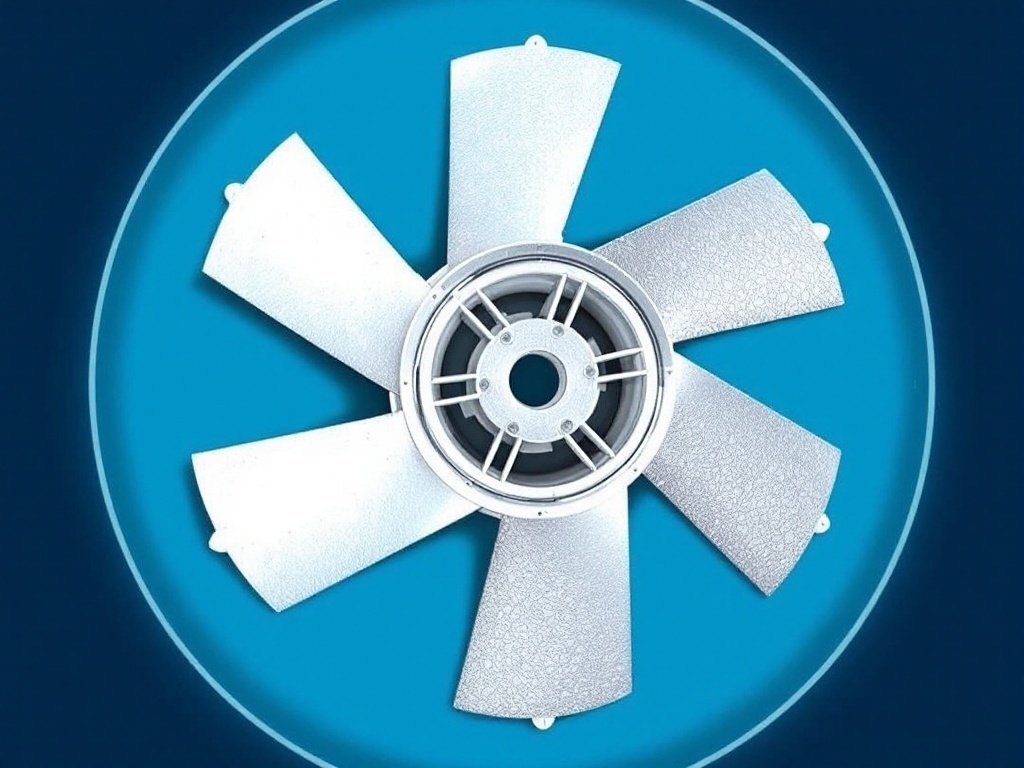How to Install Centrifugal Fan
Learn how to properly install a centrifugal fan for optimal ventilation and air circulation in your space.
Read More
In the vast landscape of industrial machinery, centrifugal fan impellers stand out as a critical component in various applications. These devices, designed to move air or gases efficiently, have become indispensable in sectors ranging from ventilation and cooling to material handling and pollution control.
This blog post delves into the intricacies of centrifugal fan impellers, exploring their working principles, types, and components. We will also discuss the advantages and disadvantages of these devices and highlight their diverse applications across industries.

A centrifugal fan impeller is a critical component of a centrifugal fan, which is a type of mechanical device used to move air or gases. The impeller consists of a central hub with a set of blades radiating outward from the hub. When the impeller rotates, it creates a pressure difference that causes air to flow from the inlet to the outlet of the fan.
Centrifugal fan impellers are designed to efficiently convert the rotational energy of the motor into kinetic energy in the form of airflow.
The working principle of a centrifugal fan impeller is based on the concept of centrifugal force. As the impeller rotates, it draws air into the center of the fan through the inlet. The air is then captured by the rotating blades and accelerated outward toward the periphery of the impeller.
As the air moves from the center to the edge of the impeller, it gains kinetic energy due to the centrifugal force generated by the rotating blades. This increase in kinetic energy results in an increase in air velocity and pressure.
The high-velocity air is then directed into the fan housing, where it is collected and guided toward the outlet.
Centrifugal fan impellers come in various types, each designed to cater to specific performance requirements and applications. The two main classifications of centrifugal fan impellers are based on blade design and drive mechanism.
Centrifugal fan impellers are capable of moving large volumes of air or gas, making them suitable for applications that require high airflow rates. The design of the blades and the centrifugal force generated by the rotating impeller allow for efficient air movement and pressure development.
Centrifugal fan impellers are effective at developing pressure, which is necessary for overcoming system resistance and delivering air or gas to the desired location. The pressure development capabilities of centrifugal fan impellers make them suitable for applications such as ventilation systems, dust collection, and material conveying.
Centrifugal fan impellers are designed to withstand the rigors of continuous operation. The robust construction, with blades and hub made of durable materials, ensures long-term reliability and minimal maintenance requirements. Properly designed and maintained centrifugal fan impellers can operate for extended periods without significant wear or performance degradation.
Centrifugal fan impellers can generate significant noise levels during operation, particularly at high rotational speeds. The noise is primarily caused by the interaction of the blades with the air or gas being moved.
Centrifugal fan impellers are sensitive to the presence of dust and debris in the airstream. Particulate matter can accumulate on the blades, leading to imbalance, vibration, and reduced performance.
While centrifugal fan impellers are effective at developing pressure, they have limitations in terms of the pressure ratio they can achieve. The pressure ratio is the ratio of the outlet pressure to the inlet pressure. For applications requiring very high pressure ratios, alternative technologies, such as positive displacement blowers or compressors, may be more suitable.
Centrifugal fan impellers are widely used in heating, ventilation, and air conditioning (HVAC) systems. They are employed in air handling units, ductwork, and ventilation fans to move conditioned air throughout buildings. Centrifugal fan impellers provide the necessary airflow and pressure to distribute air effectively and maintain indoor air quality.
In industrial settings, centrifugal fan impellers are used for process ventilation applications. They are employed in exhaust systems to remove heat, fumes, and contaminants from manufacturing processes. Centrifugal fan impellers are capable of handling high temperatures and corrosive environments, making them suitable for a wide range of industrial ventilation needs.
Centrifugal fan impellers are a key component in dust collection systems. They provide the suction and airflow necessary to capture and convey dust particles from various sources, such as woodworking shops, pharmaceutical manufacturing, and food processing facilities. The ability of centrifugal fan impellers to handle high dust loads and maintain consistent airflow makes them well-suited for dust collection applications.
In agricultural settings, centrifugal fan impellers are used for ventilation purposes. They are employed in livestock buildings, greenhouses, and grain storage facilities to maintain proper air circulation, temperature control, and humidity levels. Centrifugal fan impellers help to create a suitable environment for animal health, plant growth, and product storage.